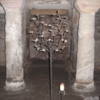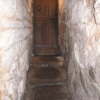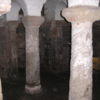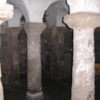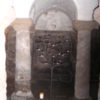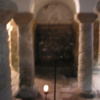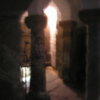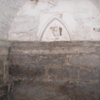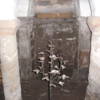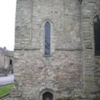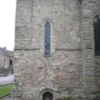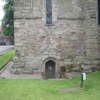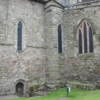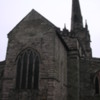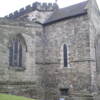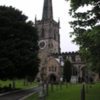Church of St Wystan, Repton, Derbyshire
Title
Church of St Wystan, Repton, Derbyshire
Subject
Archaeology
Description
The Church of St Wystan is located at Repton in Derbyshire on elevated ground overlooking the floodplain of the River Trent. The site is of exceptional Anglo-Saxon interest, and a significant amount of the Anglo-Saxon fabric survives intact in the present-day Church of St Wystan, and a perfectly preserved early eighth-century crypt survives intact beneath the chancel. The monastery was probably founded bewteen 675 and 692. From the Vita Sancti Guthlaci 'The Life of St Guthlac' (chapter XX) we know that a monastery existed at Repton in the late seventh-century, and that it was a double-house under the governance of an abbess. St Guthlac received his monastic training at Repton according to the Vita. Recent archaeological excavation has found traces of timber buildings on the site, and these were probably the earliest monastic buildings.
Repton was a royal monastery located in the Anglo-Saxon kingdom of Merica near the political centre of Tamworth. Repton was the original bishopric see of Mercia, but this was later moved to Lichfield. The site at Repton was probably a daughter-house of Medeshamstede (modern Peterborough).
A significant amount of the Anglo-Saxon building is preserved in the present-day church, especialy in the east end. Perhaps the most spectacular preservation is the Anglo-Saxon crypt. The crypt is one of the best preserved examples of its kind in England, and it was a royal masoleum. It was probably built during the reign of Aethelbald of Merica (c. 716-757). Aethelbald was murdered nearby at Seckington, and was afterwards interred in the crypt at Repton. A fragment of a free-standing cross found in the churchyard at Repton displaying on one side an armoured warrior or aristocrat on horseback with sword and shield is thought to be a representation of King Aethelbald. The original Repton Stone is now housed at the Derby Museum. The Crypt at Repton became the resting-site for Mercian royal members, and some notable interments in Repton crypt include Wyglaf, king of Mercia (c. 827-840) and his grandson, prince Wystan who was murdered in 849, from whom the site has acquired its present name. Following Wystan's murder due to internal rivalries in 849, he was elevated to the status of a saint, and Repton became his cult-site. The small door leading into the crypt from the exterior was probably the place where pilgrims could come to visit the remains of St Wystan.
Also, in 873/4 Repton was where a Viking party wintered, and this has been ascertained by archaeological excavation, which unearthed a mass grave dating to the period. The area around the church may have been used by the Vikings because it commanded a direct view of the River Trent and the floodplain below.
Repton was a royal monastery located in the Anglo-Saxon kingdom of Merica near the political centre of Tamworth. Repton was the original bishopric see of Mercia, but this was later moved to Lichfield. The site at Repton was probably a daughter-house of Medeshamstede (modern Peterborough).
A significant amount of the Anglo-Saxon building is preserved in the present-day church, especialy in the east end. Perhaps the most spectacular preservation is the Anglo-Saxon crypt. The crypt is one of the best preserved examples of its kind in England, and it was a royal masoleum. It was probably built during the reign of Aethelbald of Merica (c. 716-757). Aethelbald was murdered nearby at Seckington, and was afterwards interred in the crypt at Repton. A fragment of a free-standing cross found in the churchyard at Repton displaying on one side an armoured warrior or aristocrat on horseback with sword and shield is thought to be a representation of King Aethelbald. The original Repton Stone is now housed at the Derby Museum. The Crypt at Repton became the resting-site for Mercian royal members, and some notable interments in Repton crypt include Wyglaf, king of Mercia (c. 827-840) and his grandson, prince Wystan who was murdered in 849, from whom the site has acquired its present name. Following Wystan's murder due to internal rivalries in 849, he was elevated to the status of a saint, and Repton became his cult-site. The small door leading into the crypt from the exterior was probably the place where pilgrims could come to visit the remains of St Wystan.
Also, in 873/4 Repton was where a Viking party wintered, and this has been ascertained by archaeological excavation, which unearthed a mass grave dating to the period. The area around the church may have been used by the Vikings because it commanded a direct view of the River Trent and the floodplain below.
Creator
Kelly A. Kilpatrick
Date
c. 716-754, with later additions up to the Victorian period
Language
English
Files
Citation
Kelly A. Kilpatrick, “Church of St Wystan, Repton, Derbyshire,” Woruldhord, accessed April 19, 2024, http://poppy.nsms.ox.ac.uk/woruldhord/items/show/142.

